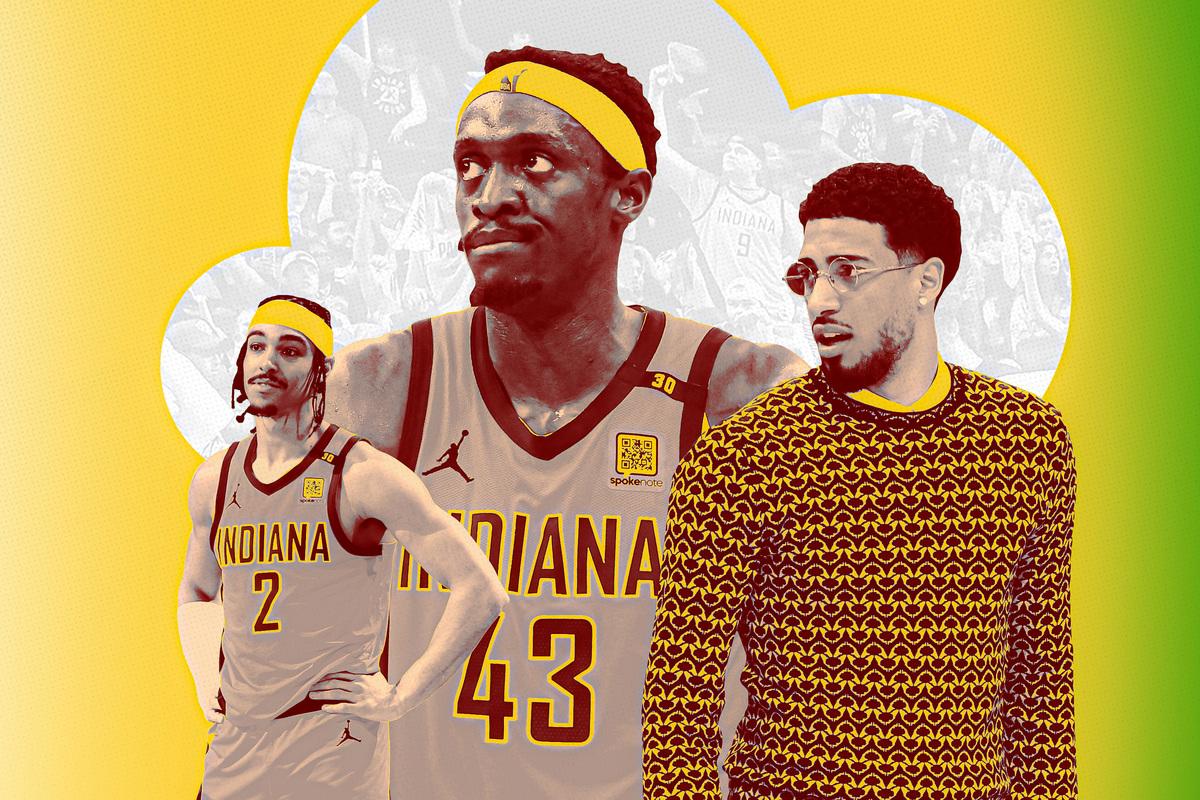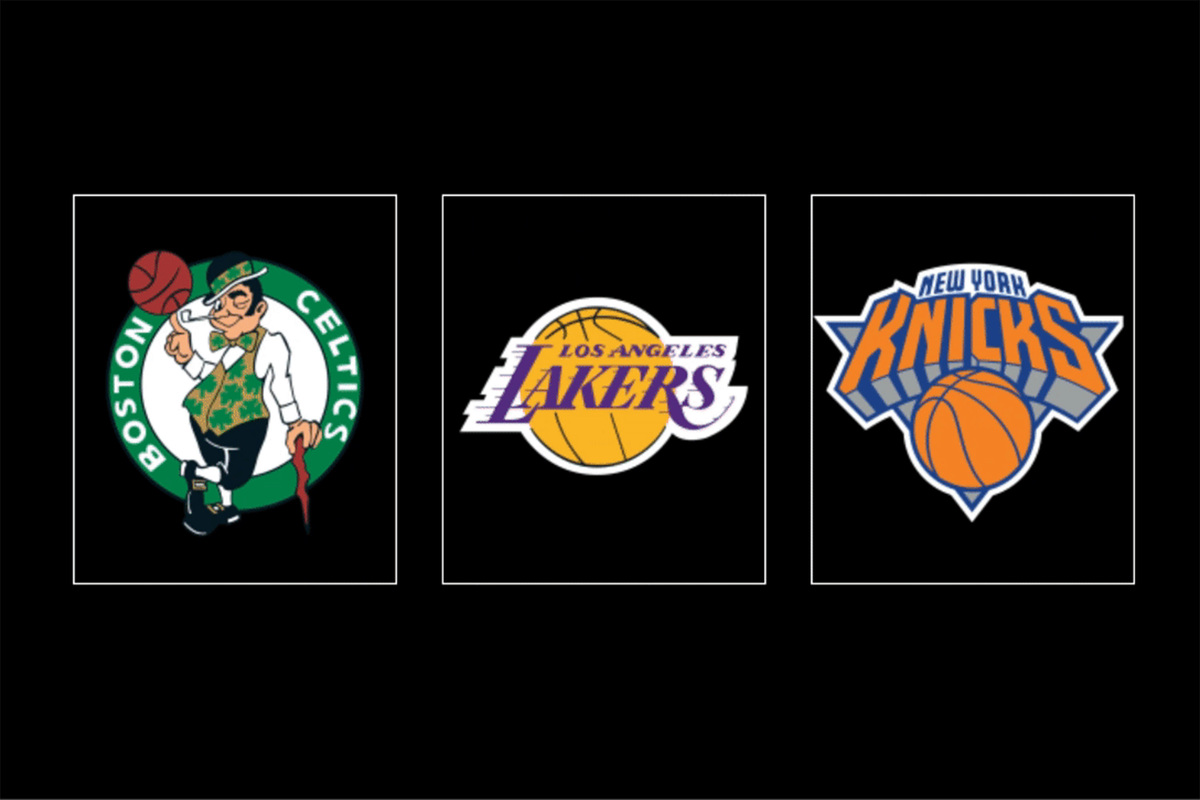
The 2024 NBA playoffs have been a conquest for the educated and an education for the untrained. The Indiana Pacers dropped Games 1, 3, and 4 by a total margin of 11 points. Silver linings merchants (read: me) will call their conference finals loss to the Boston Celtics a “competitive sweep.” But it was also an object lesson in just how close they are to championship contention—and how far.
The Pacers entered the season with just a puncher’s chance at making the postseason, yet somehow ended it only four days short of June. Injuries eased their path to the Eastern Conference finals, but the process behind their arrival is less relevant than the fact that they experienced it. The series, playoff run, and season as a whole were an opportunity for the Pacers to find out how they stacked up as the competition ratcheted up. Tyrese Haliburton started the season flourishing into a surefire no. 1 option and ended by exceeding expectations in his first postseason and pushing against the limitations of his unselfishness.
The season ended in disappointment, and the memory of endless critical late-game errors will haunt them through the summer. But the Pacers learned a wealth of important lessons about how they play best and what they look like at their worst, cycling through multiple iterations and evolving at a frantic, thrilling, Haliburton-esque pace and absorbing the kind of information it takes some young teams half decades to acquire.
“I know people think that Indiana wasn’t a good team or whatever the case may be, but I thought they were as tough as anybody we played all season,” said Jaylen Brown after Game 4. “They were physical, they were fast, they put a lot of pressure on us. So shout out to them and respect to them.”
The Pacers cycled through 22 players this season, adapting to two midseason trades while their star played in and out of a hamstring injury and their young players fell in and out of the rotation, riding the messy, rewarding, nonlinear curve of progress. The addition of Pascal Siakam heightened their ceiling. Relinquishing Buddy Hield for draft picks allowed them to recoup some flexibility. By off-loading Hield, all 3 and no D, they sacrificed firepower for long-term dynamism in the hopes that player development would help them rebuild the lost offense. Andrew Nembhard, who piled together 56 points and 19 assists in the final two games against Boston, which Haliburton missed, helped Indiana make good on that bet. Now, the Pacers enter the offseason equipped with the full non-taxpayer midlevel exception, a boatload of picks, and young players begging you to fall in love with their potential.
The Pacers’ timeline accelerated with the emergence of Haliburton. “He has changed our thinking a little bit,” Pacers general manager Chad Buchanan told reporters after the trade deadline. “Some of it is our style of play, the type of players you’re looking to put around him, but also his elevation of where he’s taken our team in such a short amount of time. We want to have some young guys that are developing, but we also gotta have some veterans that are helping us win now because this team has shown it can be competitive with the best teams in the league.”
The Siakam-Haliburton duo is a natural fit on paper; they have both similarities (thriving in a fast-paced, pass-happy style) and differences (one prefers to stay inside the arc, the other outside it). But without a training camp for them to jell, they had to get acclimated on the fly. The Pacers also traded Hield, Haliburton’s longest-tenured teammate and favorite drive-and-kick target, and stuck Nembhard into the starting lineup for good. The new starting five, which surrounded Haliburton with four good defenders, allowed just 107 points per 100 possessions during the regular season. But with Haliburton spending the latter half of the season navigating a hamstring injury, two trades, and a new spacing reality, the Pacers’ once high-octane offense started to sputter.
At its best, Indiana’s new offense played fast in both the half court and full court, allowing pick-and-rolls to seamlessly flow into post-up mismatches for Siakam and Myles Turner, who were developing a burgeoning high-low game. But it took until the postseason, when the Pacers’ starting lineup played a league-high 288 minutes together (and posted a healthy 14.1 net rating), for that vision to clarify.
In Game 4, Siakam transitioned into an immediate counter when the Celtics took the post-up away, screening for rookie Ben Sheppard, who nailed a wide-open 3 on the opposite corner:
It was a beautiful display of tactical progress by way of problem-solving, a proof of concept that the young Pacers can take into the next phase of their development, when they’ll have to assess potential (Sheppard shot 38 percent from 3 in the postseason) without falling in love with it (all his postseason attempts were either “open” or “wide open”).
Through the postseason, Rick Carlisle prioritized development over short-term gains. No one benefited more from being thrown into the fire than the 24-year-old Nembhard, who was forced to pick up the likes of Damian Lillard and Jalen Brunson, overaggressive jump-shooting fouls be damned, as well as big, ferocious forwards like Brown and Jayson Tatum. You could even, in this context, forgive Carlisle for the timeout that was never called at the end of Game 3 against Boston, leading Nembhard to commit a functionally season-ending turnover against Jrue Holiday. Maybe that one’s a stretch, but in the cold light of a sweep, I like knowing that Nembhard will have to carry the weight of his mistake into the offseason, alongside the high-voltage experience of running a postseason offense in crunch time. If all goes right, Nembhard will have the wherewithal to call the timeout himself next time, whether it’s on the final possession of the game or an inbound play.
Through the course of the playoffs, Indiana’s playbook evolved to accommodate Nembhard’s burgeoning attacking ability and became more layered as a result. In Game 1 of the regular season, Nembhard’s ability to draw attention in a Spain pick-and-roll with Haliburton as a screener would have been negligible. By Game 1 of the Eastern Conference finals, the threat of Nembhard’s downhill attack was enough to sway the rim protection and get Turner an easy layup:
After Haliburton went down, Nembhard discovered new depths to his bag, bumping, bruising, and pump-faking his way closer to the rim and decelerating to create openings. He shot 51 percent on pull-up 2s through the playoffs and opened Game 4 with two of them. The Brunson comparison—a second-round pick turned star by way of heroic playoff performances in the absence of the team’s best player—is tactically, aesthetically, and narratively appealing. Hoping Nembhard will turn into a Brunson is also tantamount to betting on a miracle. For every Brunson-esque arc, there’s a Caleb Martin–esque comedown.
This is the tightrope Indiana will spend the next few years walking. Just about every young Pacer has stretches that make you want to believe they can answer every question the team will face. There’s Aaron Nesmith, Indiana’s most physical defender, honing his closeout attacks. There’s Isaiah Jackson, already an athletic marvel with great hands for lobs and 50-50 balls, who’s making measured closeouts, intuitive help rotations, and floaters on the run. And there’s Obi Toppin, a free agent this summer, who’s honing his 3-point shot and repping out precious playoff possessions guarding Tatum.
Physicality, at times, unmoored the Pacers. They withstood and survived the scrappy Knicks, matching them on the glass, but then came apart in a series of chaotic blunders against the Celtics: Haliburton made critical Game 1 turnovers, at the end of regulation and in overtime; in Game 4 Turner coughed up the ball in the face of defensive pressure, culminating in a brief squabble with Brown; Siakam drove and kicked to nobody in the final five minutes of Game 4. All told, Indiana turned the ball over on almost a quarter of its clutch possessions against Boston. It lost three games in which it had a 90 percent probability to win in the fourth quarter.
The size and physicality the Pacers need, especially on the wing, could already be hanging out on the roster. Bennedict Mathurin, who underwent season-ending shoulder surgery in March, and Jarace Walker, last year’s no. 8 pick who was too green to get minutes, could be the answer. Or maybe they could be packaged in a deal for someone else. Indiana can also off-load its surplus of eight future second-round picks (three in this draft) and two future first-round picks. The Pacers won’t trade Nembhard (whom they wouldn’t relinquish for Siakam), so they’re probably a few pieces short of making a deal for a star like Mikal Bridges, but they can definitely make a run at elite role players like Ayo Dosunmu, Alex Caruso, Tari Eason, or Jerami Grant, though the latter would crush their cap. Judging by Kevin Pritchard’s history, there’s probably some secret trade we haven’t thought of yet. Who had the Pacers flipping Paul George for Domantas Sabonis and Victor Oladipo, or Sabonis for Haliburton? Indy got Siakam for Bruce Brown, a calculated free agent acquisition last summer; two non-rotation pieces in Kira Lewis Jr. and Jordan Nwora; two picks in a weak draft; and a top-four-protected 2026 pick. Indiana can also access the non-taxpayer midlevel this offseason. That’s probably not enough to pry away Kentavious Caldwell-Pope or Malik Monk, but Bruce Brown, ironically, could be an interesting target if he hits free agency again. Both Aaron Wiggins and Isaiah Joe are up for extensions. Maybe Indiana could steal one of them from the Thunder.
The Pacers banked on their own player development abilities when they traded for Siakam. The All-Star forward turned 30 in April, but his age is misleading. He entered the NBA at 22 and didn’t play full-time starter’s minutes until turning 24. Entering his 10th season, he’ll have played fewer career minutes than Karl-Anthony Towns, Aaron Gordon, Nikola Jokic, or Tatum. Considering that Haliburton is 24 and Turner is 28, it’s safe to say that this iteration of the Pacers’ window could be as long as Siakam’s upcoming extension.
All of which is to say: Like Haliburton when he skips down the court with the ball in his hands, Indiana has options and just enough time to watch the play develop and take what the game gives them.


